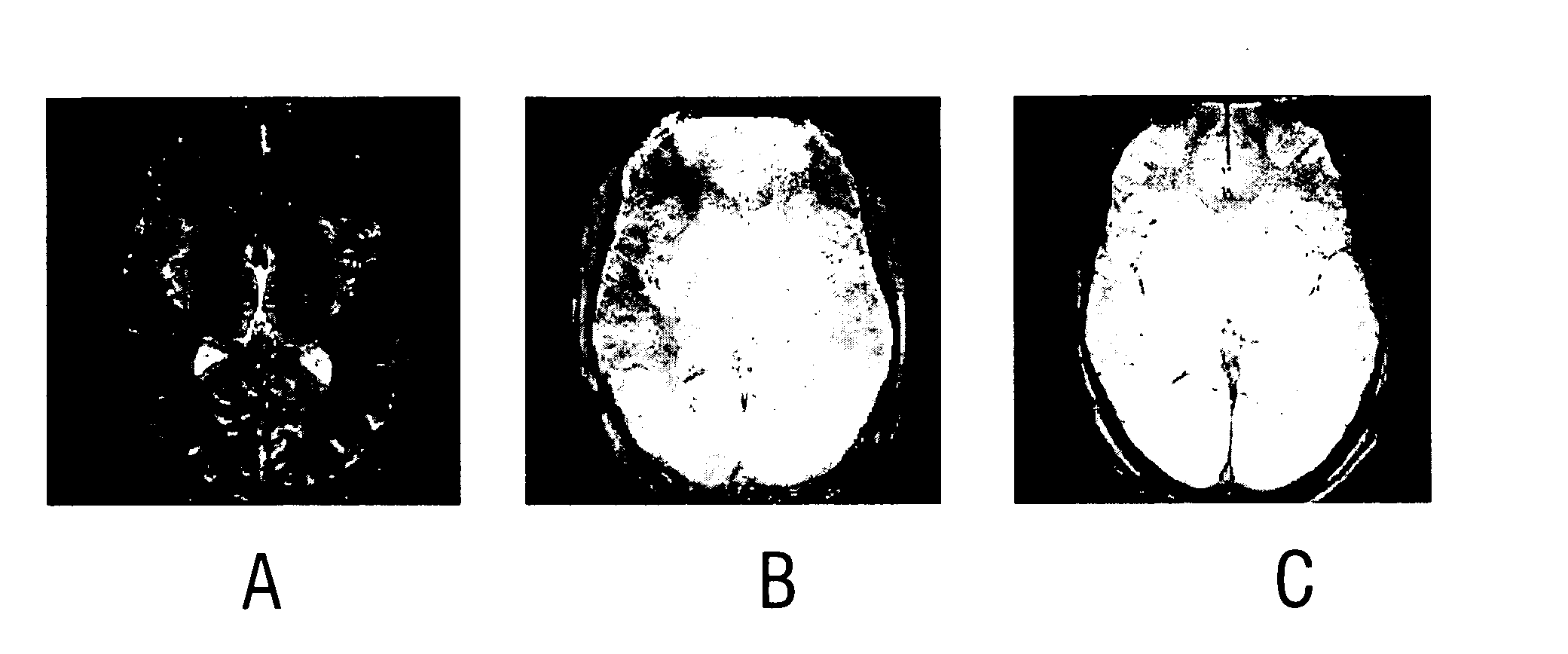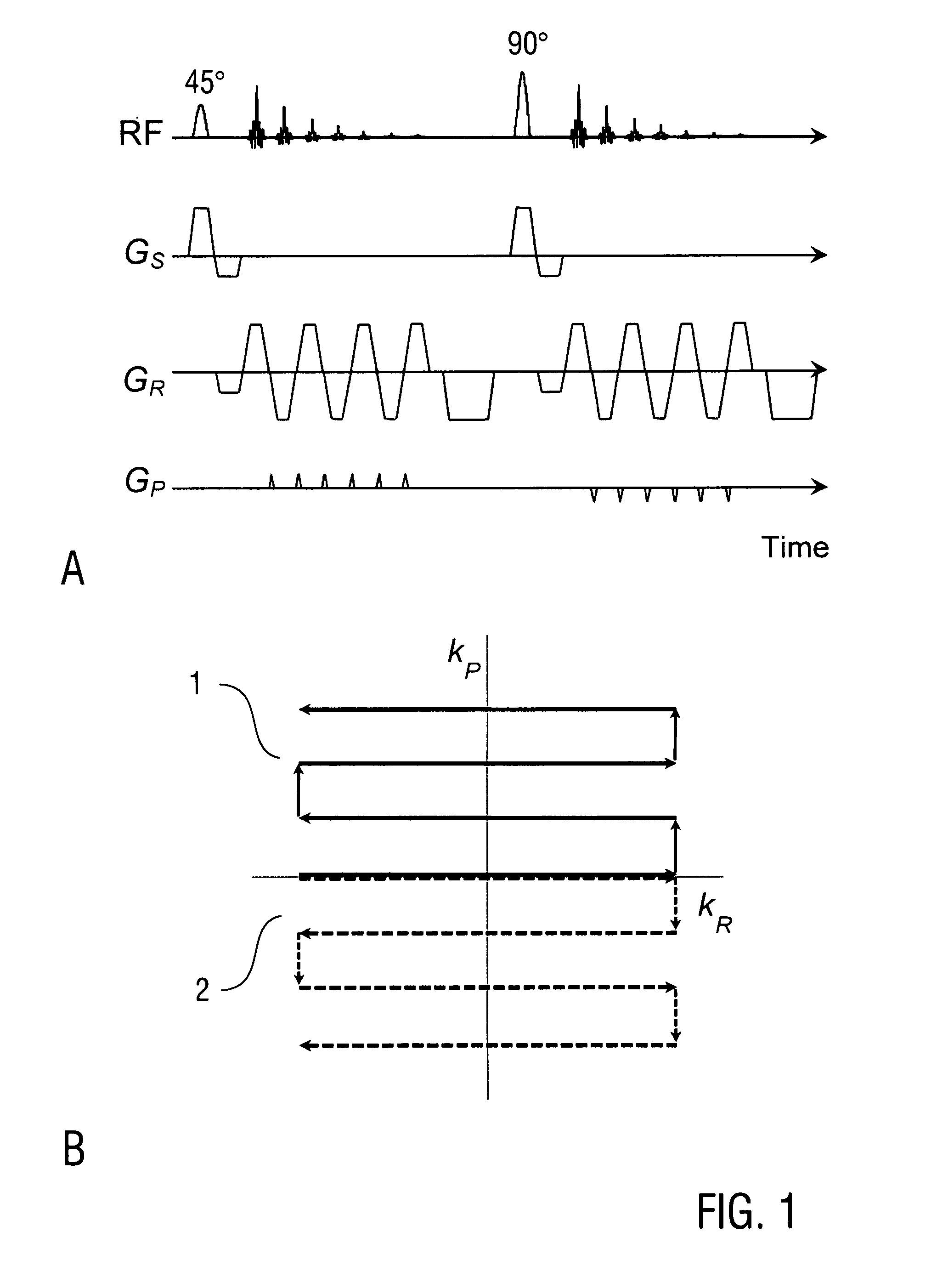Magnetic resonance imaging with improved imaging contrast
a magnetic resonance imaging and contrast technology, applied in the field of magnetic resonance imaging of objects, can solve the problems of data inconsistency and image artifacts, limits the implementation of high-resolution epi techniques, and the resolution is typically limited to more than a millimeter for humans, so as to reduce the unwanted influence of t2* relaxation, minimize the echo time, and maximize the snr
- Summary
- Abstract
- Description
- Claims
- Application Information
AI Technical Summary
Benefits of technology
Problems solved by technology
Method used
Image
Examples
Embodiment Construction
[0076]Preferred embodiments of the invention are described in the following with particular reference to the construction of the excitation and encoding sequences. Timing sequences are graphically represented as introduced in prior publications, see e.g. publications [5] and [20]. Details of creating the RF pulses and gradients of these sequences, collecting the MR signals and controlling an MR scanner as well as details of the construction of an MR scanner are not described as far as they are known from conventional MR imaging techniques. Furthermore, after reconstructing the at least one image of the object, the image can be subjected to a further image processing or image recording, displaying, storing, or printing as it is known in prior art.
DEPICTING Method
[0077]FIG. 1 shows the basic RF pulse and gradient sequence for the inventive DEPICTING method and the corresponding k-space trajectories. The first tile 1 of k-space data is sampled with a given polarity of the phase blips (...
PUM
 Login to View More
Login to View More Abstract
Description
Claims
Application Information
 Login to View More
Login to View More - R&D
- Intellectual Property
- Life Sciences
- Materials
- Tech Scout
- Unparalleled Data Quality
- Higher Quality Content
- 60% Fewer Hallucinations
Browse by: Latest US Patents, China's latest patents, Technical Efficacy Thesaurus, Application Domain, Technology Topic, Popular Technical Reports.
© 2025 PatSnap. All rights reserved.Legal|Privacy policy|Modern Slavery Act Transparency Statement|Sitemap|About US| Contact US: help@patsnap.com



